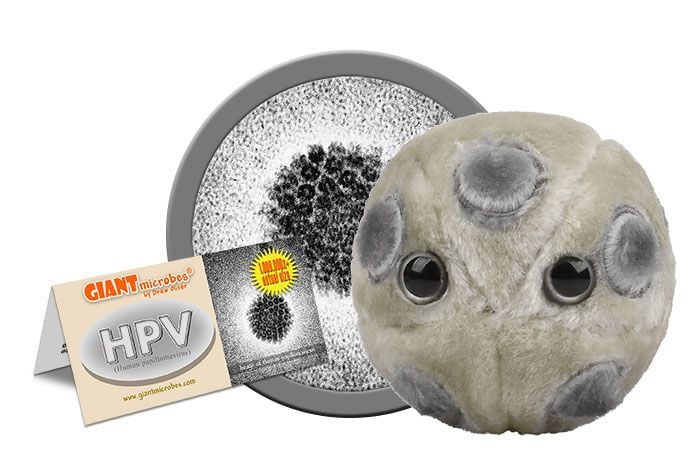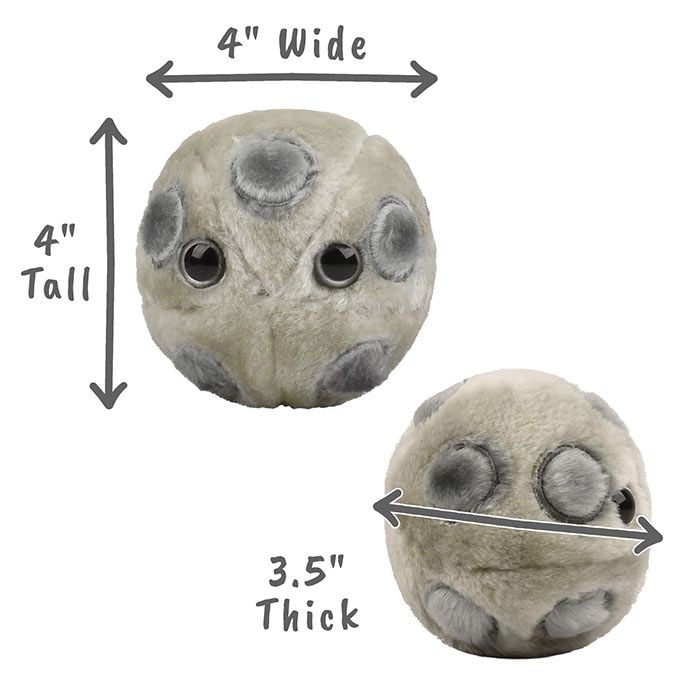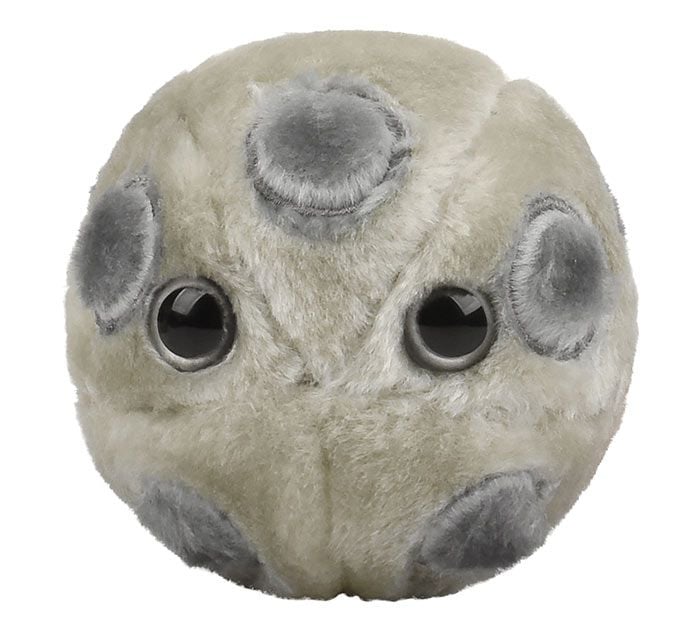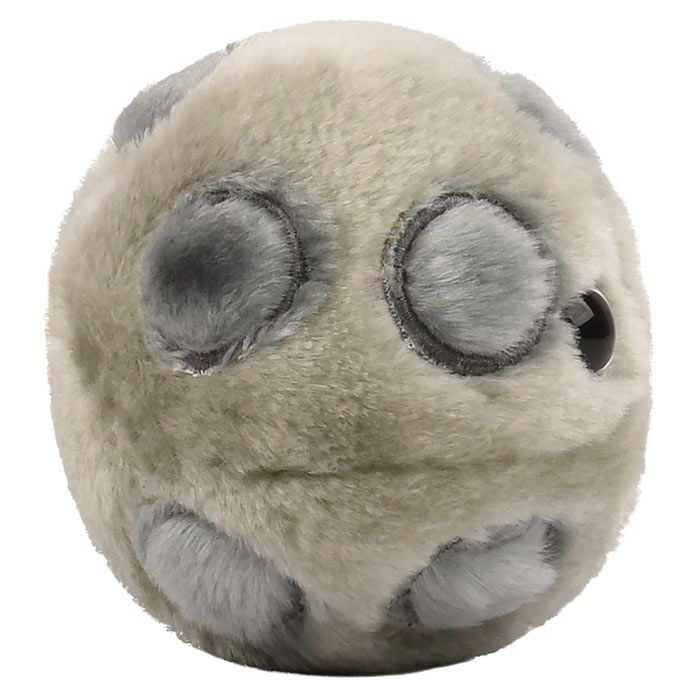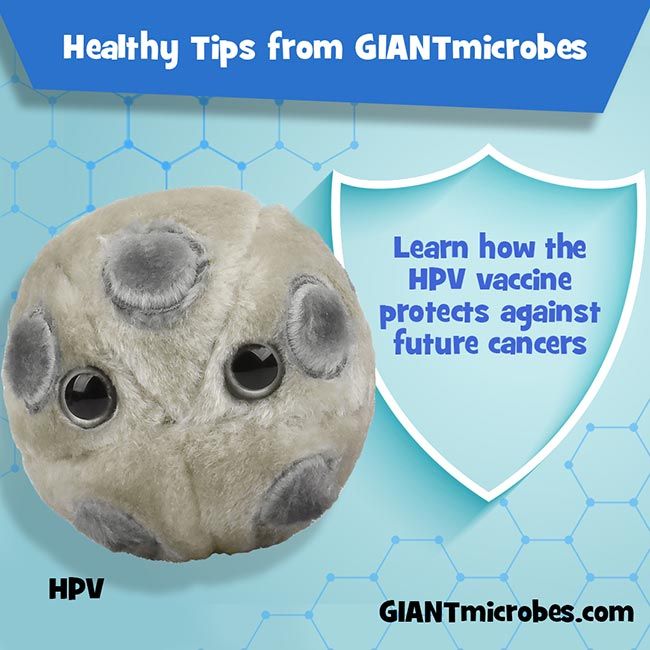HPV (Human papillomavirus)
Kissing this frog can give you warts. But, the HPV vaccine can be a real prince. Learn the facts about the Human Papillomavirus and Sexually Transmitted Infections. Soft, cuddly and includes an educational card with facts about this important virus.
GIANTmicrobes HPV helps start important discussions about reproductive health and serves as a reminder to act smart and get the HPV vaccine. A unique, memorable and fun gift for friends and loved ones and anyone with a healthy sense of humor. Educational tool for students, nurses, doctors, public health professionals, scientists and reproductive health experts.
Size: 4 x 4 x 3.5”
Product Details
Additional Information
| Sizes | Giantmicrobes are based on actual microbes, cells, organisms and other critters, only 1,000,000 times actual size! Gigantic (GG) 16-24" XL (XL) 10-15" Original (PD) 5-8" Keychain (KC) 2-4" with clip |
|---|---|
| Materials | Plush from all new materials. Stuffed with polyester fiber fill. Surface washable: sponge with water & soap, air dry. |
| Packaging | Each plush microbe includes a printed card with fun, educational and fascinating facts about the actual microbe or cell. |
| Safety | Every product meets or exceeds U.S. and European standards for safety. For ages 3 and up. |
All about HPV (Human papillomavirus)
FACTS: Human papillomavirus (HPV) is a virus that includes more than 100 different strains or types. “Low risk” HPV types can cause the common warts which are often found on the fingers and feet. However, like the frog in the fairy tale, “high risk” HPV types can be a lot more than you bargain for: untreated, they can ultimately lead to cervical (and other) cancers.
HPV infections can be particularly dangerous because in many cases they produce no symptoms – though warning signs such as itching and irritation are sometimes apparent.
But fortunately, there are three pieces of very good news. In 90% of cases, the body’s immune system can clear HPV infections (both high-risk and low-risk) on its own, generally within two years.
In addition, there are a variety of treatments and procedures which can remove HPV lesions, including topical ointments, freezing with liquid nitrogen, and even laser surgery – though none can reliably eliminate the HPV infection itself. Regular Pap tests can reveal the presence of HPV so that treatment can be started.
Finally, a vaccine is now available which protects against several of the most common HPV types, including specifically those which are risk-factors for cancer.
Now that’s a wish come true.
| Name | Papilloma comes from Latin root words “papilla” and “oma”, describing the nipple-like appearance of the warts HPV produces. |
|---|
| Actual Size | This circular virus is about 2.75 micrometers, or 1/6500 the size of a dime! |
|---|
| Where It Lives | Human Papillomavirus, or HPV, a sexually transmitted infection passed from person-to-person during unprotected sexual activity or from a pregnant mother to her baby. |
|---|
| Symptoms | Most of the time people who catch HPV don’t experience any symptoms and never even know they even had it. Some people may develop warts and experience a lot of itchiness. If left untreated, it can lead to different types of cancer, most commonly cervical cancer. |
|---|
| Cure | There’s currently no cure for HPV, but there is a preventive vaccine available for boys 9 and up, and girls 13 and up. |
|---|
| History |
HPV was first discovered in 1956 by a group of scientists in a lab. However, the real discovery came in 1983 when Harald zur Hausen discovered that HPV causes cervical cancer. Outbreaks: HPV is one of the most common STIs around the world so outbreaks are not tracked. About 75% of Americans will have HPV in their lifetime and the rate continues to increase with younger generations. |
|---|
| Fascinating Facts |
There are over 200 types of HPV. More than 40 of them are related to sexual contact, and two of them are responsible for the majority of HPV-related cancer cases. Famous people who died of it: 1952: Eva Peron, beloved former first lady of Argentina better known as Evita, died from cervical cancer when she was only 31 years old. |
|---|


